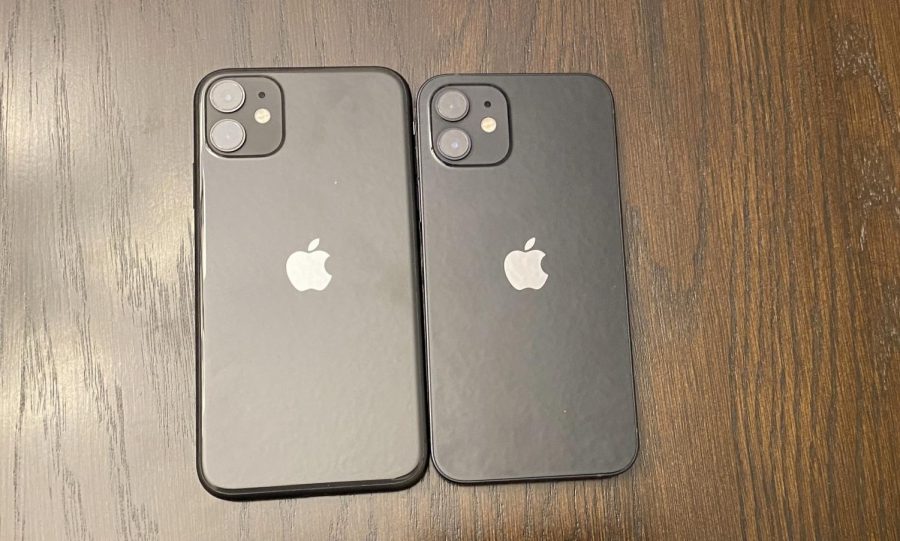When Apple announced the release of the new iPhone 13 during their Apple Event on Sept. 14, 2021, many individuals were shocked and disappointed. The iPhone seemed identical to the brand’s previously released smartphone, the iPhone 12, which had been incredibly similar to the iPhone 11.
This quickly became the source of numerous memes mocking the brand because it appeared the major change was actually quite minor – the back camera had simply shifted. The release of the iPhone 13 made customers suspicious, wondering if brands like Apple have become complacent, relying on the loyalty of their fanbases to maintain sales increases. It seemed Apple was neglecting the actual improvement of the product.
This suspicion is not new; Forbes previously shed light on the issue of growing companies producing sub-par products. Gregory Raiz, the CEO and founder of Raizlabs, experienced this decline first-hand as an architect. “I could have achieved a better product with a smaller team. This is counterintuitive, but it’s because the ratio of product expertise has to stay balanced with the team’s ability to execute the vision,” he shared.
As brands like Apple expand their reach to greater audiences, they have had to expand their teams as well. Apple prides itself on being one of the biggest job creators in the United States, which means that their teams of visionaries are growing rapidly. Is this job growth hindering their ability to create strong products? Are they too dependent on marketing to FOMO?
FOMO, or the fear of missing out, greatly affects students on multiple levels, and phone acquisition is no exception. iPhone models have become a status symbol, and many students feel pressure to get the newest iPhone, often pre-purchasing as soon as the new smartphones are announced. When multiple students used the tool on Apple’s website to compare iPhone models, they found that the iPhone 13 was very similar to the iPhone 12 they currently own.
Zach McMeen is a Visual Arts and IT Coordinator at Coram Deo Bible Church where he often advises employees about which iPhones they should purchase. He believes that “a part of the less drastic changes as of recent can be attributed to the fact that they have a loyal and secured fan base. Part of the reason Apple sells services is in part to ‘lock’ people into the experience and make it less likely to switch to a different phone platform.”
According to the Apple website, the iPhone 13 is different from the iPhone 12 because it has a pink finish option, new cameras that allow for the iPhone to have a cinematic mode and an A15 chip. All other features on the iPhone 13 have been available in previous models.
Are these minor changes really worth the $800+ a new iPhone 13 costs?
PV alumni Jonathan Glaum is currently studying Digital Media at Liberty University and watches every Apple Event. He owns an iPhone 12 Pro Max, but does not feel that the iPhone 13 introduced enough innovations to make a new phone purchase worth the expense. This lack of change, he feels, is due to the fact that Apple is in a new stage of growth. “The state of technological exploration is in a different season. The early 2000s were about invention and creating new spaces for technology to thrive in, while these past 10 years have been about innovating and improving bit by bit,” he explained.
Apple’s intention to ensure that their products are best used together is strategic and an effective way to ensure that customers purchase their products and stay loyal to their brand. Software like Apple’s iOS and MacOS work effectively together – a common iCloud account will keep the user logged into an iPhone, iPad and iMac which will work with iTunes, AirPods and AirTags. This puts Apple at an advantage in the market of technology – its customers are highly likely to continue to use Apple products because convenience is important to them.
While Apple may have an advantage in the market, brands like Samsung are trying different strategies to maintain sales. “Microsoft and Samsung aim to sell the latest tech as soon as possible. This is a different strategy than Apple but is effective in its own way,” Glaum shared.
Apple is not the only brand with a loyal fanbase that appears to accept mediocrity, however. Brands such as Kylie Cosmetics have recently faced backlash after the quality of their products appeared to decline in recent releases.
After their show “Keeping Up With the Kardashians,” the Kardashians had a loyal fanbase that allowed for Kardashian family members to launch numerous successful companies. One of these new endeavors was Kylie Cosmetics, which recently rebranded prior to the launch of Kylie’s newest collection, “24k.” This rebrand led to many loyal customers feeling dissatisfied with the quality of their cosmetic purchases.
Reviews on one of Kylie’s most popular makeup items, the lip kit, have shown that the rebrand has negatively impacted the company’s reputation. On the Kylie Cosmetics website, recent reviews have been negative, with loyal fans sharing that they feel the rebrand has changed product colors and product quality.
While Kylie Cosmetics has not released an official statement sharing how their new formulas have impacted these color changes, one thing remains clear – brands may be too comfortable with their position in the market, leading them to compromise the quality of their products.
It is time for businesses to work at customer retention by resisting the urge to produce mediocre product releases at the expense of their loyal fanbases.









